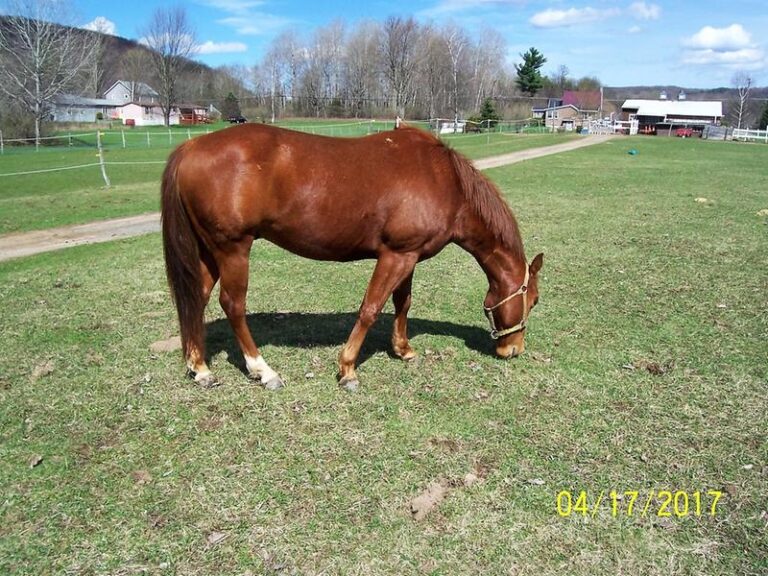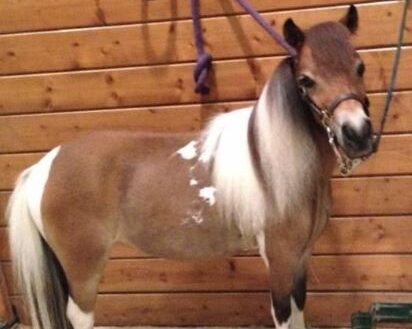
Horse Feed for Overweight/Easy Keepers
What is the best horse feed for easy keepers? Find out what ingredients set Nutrena® horse feed apart from other horse feed brands on the market and why we provide the best nutritional support for overweight horses and easy keepers.
FAQs About Feeding Overweight Horses and Easy Keepers
If you’re feeding an overweight horse, it’s important to read these frequently asked questions about ingredients, diet requirements, and what is guaranteed on your feeding tag. In order to choose the best horse feed for your easy keeper, you have to know what low calorie horse feed provides balanced nutrients and how to compare different products on the market.
-
How do you know if your horse is overweight?
When deciding the ideal diet for your horse, it is important to first consider their Body Condition Score. Body condition scoring in horses is a numerical condition scoring system that provides a consistent measure of the degree of body fat in horses of various breeds and sizes.
Download a copy of the scorecard along with a tracking form here.
- 1 / Poor: Animal extremely emaciated. Spinous processes, ribs, tailhead and hooks and pins projecting prominently. Bone structure of withers, shoulders and neck easily noticeable. No fatty tissues can be felt.
- 2 / Very Thin: Animal emaciated. Slight fat covering over base of spinous processes, transverse processes of lumbar vertebrae feel rounded. Spinous processes, ribs, tailhead and hooks and pins prominent. Withers, shoulders and neck structures faintly discernible.
- 3 / Thin: Fat build-up about halfway on spinous processes, transverse processes cannot be felt. Slight fat cover over ribs. Spinous processes and ribs easily discernible. Tailhead prominent, but individual vertebrae cannot be visually identified. Hook bones appear rounded, but easily discernible. Pin bones not distinguishable. Withers, shoulders and neck accentuated.
- 4 / Moderately Thin: Negative crease along back. Faint outline of ribs discernible. Tailhead prominence depends on conformation, fat can be felt around it. Hook bones not discernible. Withers, shoulders and neck not obviously thin.
- 5 / Moderate: Back level. Ribs cannot be visually distinguished but can be easily felt. Fat around tailhead beginning to feel spongy. Withers appear rounded over spinous processes. Shoulders and neck blend smoothly into body
- 6 / Moderate to Fleshy: May have a slight crease down back. Fat over ribs feels spongy. Fat around tailhead feels soft. Fat beginning to be deposited along the sides of the withers, behind the shoulders and along the sides of the neck.
- 7 / Fleshy: May have crease down back. Individual ribs can be felt, but noticeable filling between ribs with fat. Fat around tailhead is soft. Fat deposited along withers, behind shoulders and along the neck
- 8 / Fat: Crease down back. Difficult to feel ribs. Fat around tailhead very soft. Area along withers filled with fat. Area behind shoulder filled in flush. Noticeable thickening of neck. Fat deposited along inner buttocks.
- 9 / Extremely Fat: Obvious crease down back. Patch fat appearing over ribs. Bulging fat around tailhead, along withers, behind shoulders and along neck. Fat along inner buttocks may rub together. Flank filled in flush.
-
How do you weigh your horse without a scale?
Using an equine weight tape, measure in inches your horse’s heart girth. Measure across the highest part of the withers and keep the tape as close behind the elbows as possible. Next, using two people, measure in inches your horse’s body length from the point of the shoulder, straight back along the horse’s side, to the point of the buttock or crease. Depending on your horse’s age, use one of the following equations to estimate weight.
- Adult horse: (Heart Girth x Heart Girth x Body Length) ÷ 330 = Bodyweight in pounds
- Yearling: (Heart Girth x Heart Girth x Body Length) ÷ 301 = Bodyweight in pounds
- Weanling: (Heart Girth x Heart Girth x Body Length) ÷ 280 = Bodyweight in pounds
Note: The above calculation is not accurate on draft breeds.
It is important to know your horses weight to know how much you should be feeding your horse. Once you know your horse’s current Body Condition Score and Weight, the next step is identifying the correct feed.
-
What are your lowest calorie feeds for horses?
Nutrena feed has a wide range of products to meet the needs of all horses, including overweight and underweight horses.
Empower Topline Balance is Nutrena’s lowest calorie product that offers a blend of the essential amino acids, vitamins, and minerals horses need to look and feel their best without the extra calories. Since Empower Topline Balance is a diet balancer with concentrated nutrient levels, it allows for low feeding rates to balance forages.
For horses needing a low-calorie horse feed, SafeChoice Special Care is another low-calorie horse feed option, with 7% fat and only 10% NSC. This controlled starch formula is designed for easy keepers, metabolic concerns, ponies and miniature horses. Not only is SafeChoice Special Care the lowest level of starch and sugar in the SafeChoice lineup, but it also doesn’t have added corn, corn co-products or molasses.
-
How do you help your horse lose weight while maintaining nutrients?
When considering the feeding program for your overweight horse, first take into consideration the forage type, quantity and frequency he is being fed. The overweight horse benefits most from grass hay over legume hay due to it’s reduced calorie content. Most overweight horses do best on grass hay with a ration balancer to provide balanced levels of necessary vitamins, minerals and amino acids.
-
How can I use the same feed for horses with different calorie requirements?
The feeding instructions are one of the most underutilized parts of the bag. Horse owners are notorious for eye-balling feed (we are all guilty). However, it is important to reference your horse’s weight and life stage/activity level to make sure they are receiving the appropriate number of calories and their minimum nutrient requirements. By adjusting weight of feeding, you can use a feed like SafeChoice All Life Stages to meet requirements for a range of horses, including easy keepers and hard keepers.
For example, a barn with five very different horses can use SafeChoice All Life Stages at the recommended daily feeding rate to feed:
- Horse 1: 900lb Senior Horse in Maintenance: 2.25lb – 4.5lb
- Horse 2: 1,200lb Performance Horse in Heavy Exercise: 12lb – 18lb
- Horse 3: 550lb Yearling: 4.13lb – 5.5lb
- Horse 4: 1,000lb Lesson Horse in Light Exercise: 5lb – 7.5lb
- Horse 5: 1,100lb Broodmare in Early Lactation: 11lb – 16.5lb
Save with our See the Difference Trial
Recommended Products
-
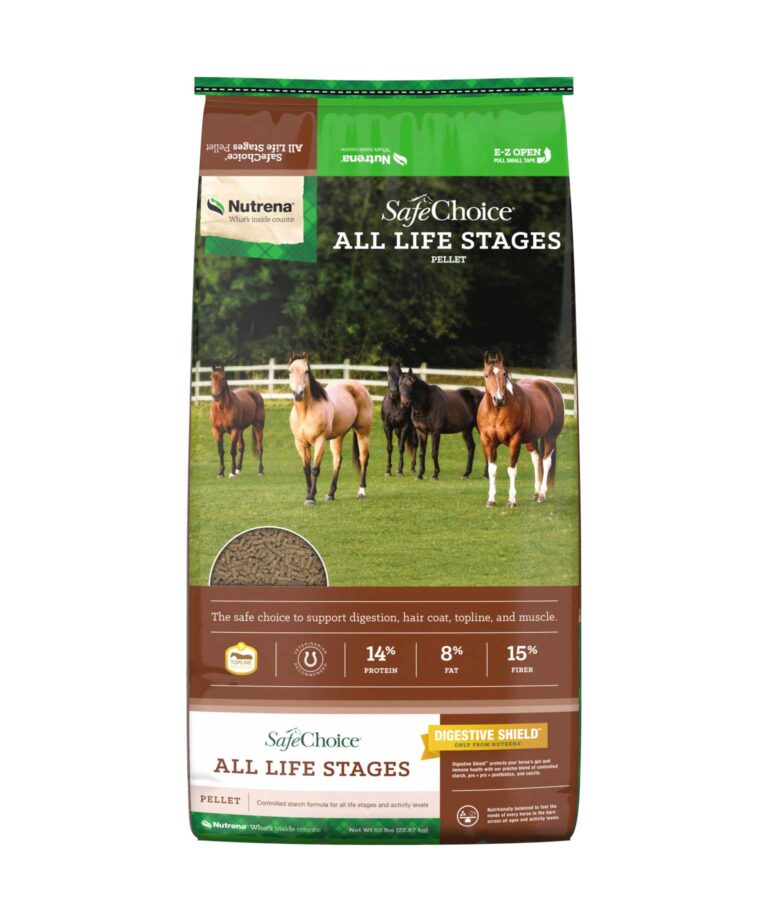 SafeChoice
SafeChoice
All Life Stages
14.0% Crude Protein15.0% Max Crude Fiber8.0% Crude FatNutritionally balanced, controlled starch formula for all life stages and activity levels including performance horses – now with Digestive Shield™Learn More -
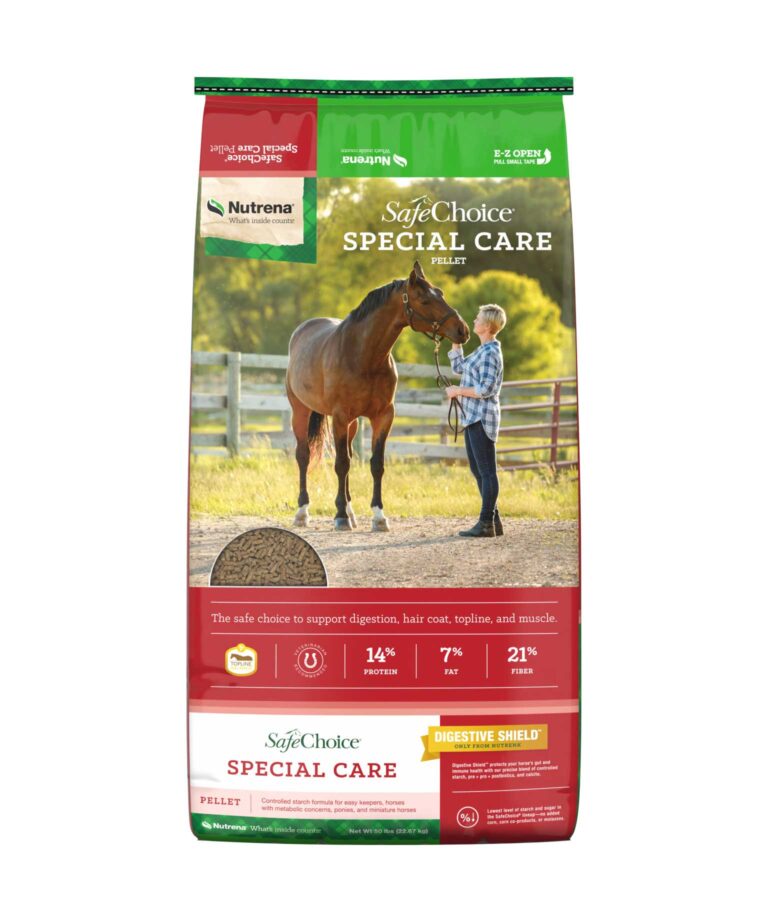 SafeChoice
SafeChoice
Special Care
14.0% Crude Protein21.0% Max Crude Fiber7.0% Crude FatLow controlled starch formula with only 10% NSC for horses with metabolic concerns and easy keepers – now with Digestive Shield™Learn More -
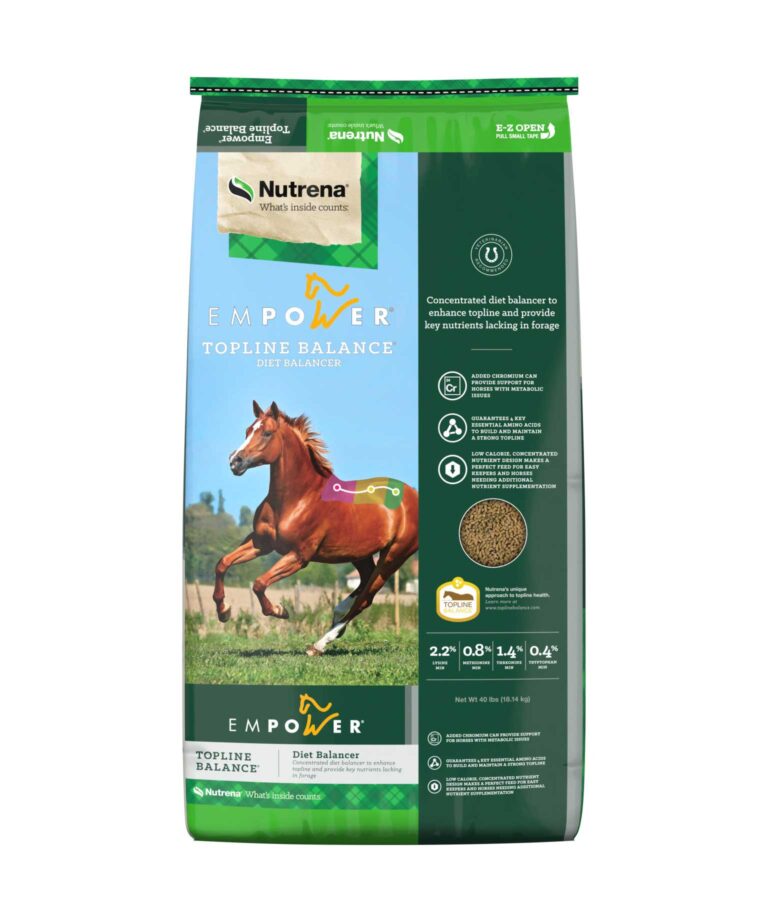 Empower
Empower
Topline Balance
30.0% Crude Protein8.0% Max Crude Fiber5.0% Crude FatConcentrated diet balancer to enhance topline and provide key nutrients lacking in forageLearn More
Get a FREE Consultation
Fill out our Contact Us form for an equine nutrition expert to provide 1-on-1 recommendations for your feeding program.
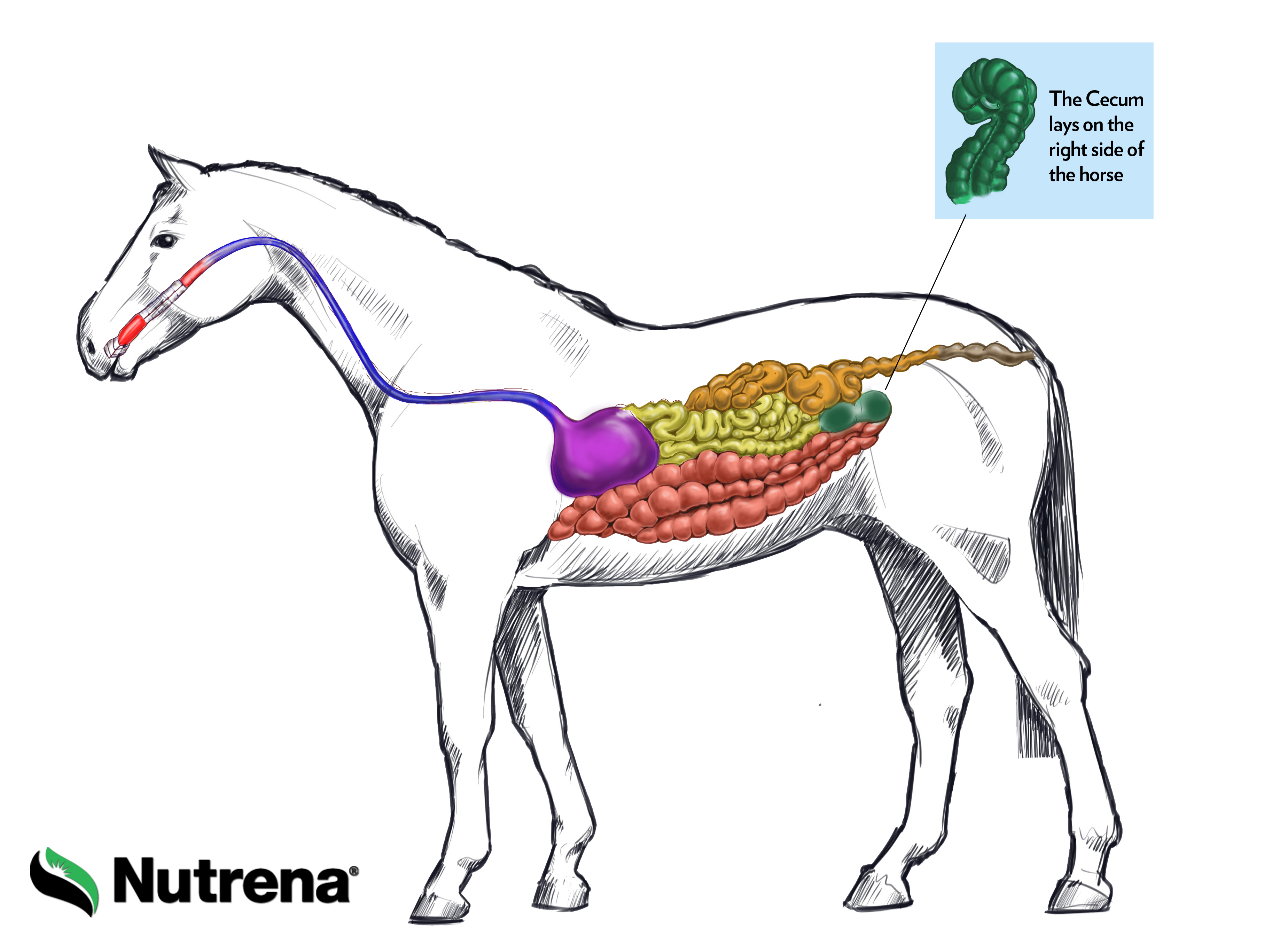
Nutri-Bloom Advantage®
Only from Nutrena
What if something in the feed formula could help a horse better digest the hay, pasture, and feed they eat? Nutri-Bloom Advantage, a proprietary digestive health blend built into SafeChoice® Feeds and ProForce® Senior, can help overcome some of these obstacles. By improving the horse’s digestive efficiency, more calories can be extracted from the less-than-ideal hay. In fact, in a research study, horses who consumed diets fortified with Nutri-Bloom Advantage® demonstrated up to 15% improvement in apparent fiber digestibility from their hay and feed concentrate rations.
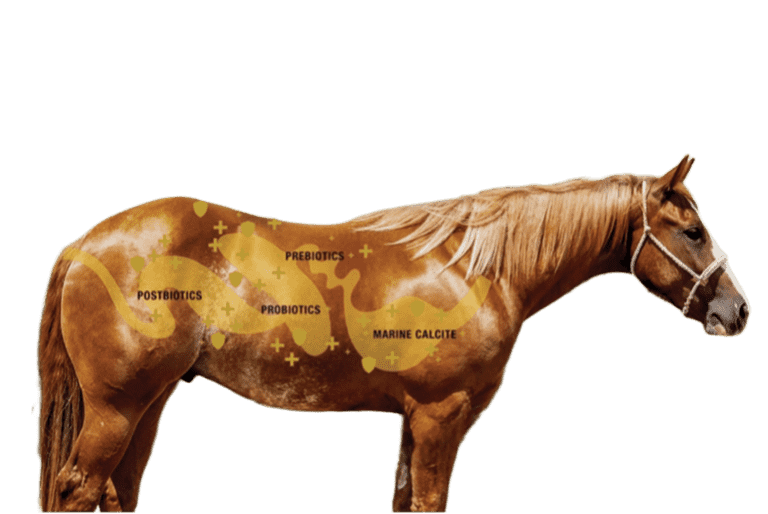
Digestive Shield™
Only from Nutrena
Digestive Shield™ is a new technology, exclusive to the Nutrena® brand, that supports gut health from end-to-end with a unique combination of controlled starch, calcite and pre + pro + postbiotics. Digestive Shield™ is one more way Nutrena® continues to work to promote the health and well-being of horses. Unlike some other horse feed, Nutrena SafeChoice guarantees pre + pro + postbiotics on our feed tags, so you can support your horse’s immune system and gut health, maintain microbiome and stomach pH, balance digestive system, digestive tract, overall health and performance.
Related Topics
-
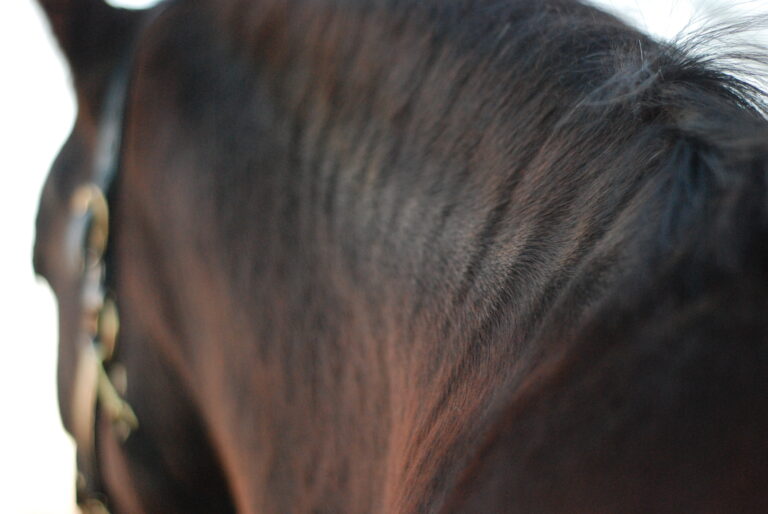
Managing Overweight Horses
Feeding the overweight horse can be tough. Learn tips for managing overweight horse’s pasture, exercise, and daily feeding routine.
View Blog -
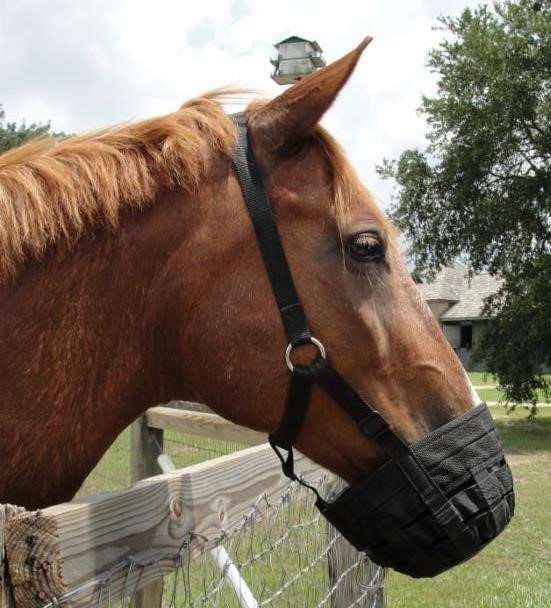
Taking Weight Off of Easy Keeping Horses
Obesity in horses can lead to laminitis, overheating and numerous other health issues. Ideally, chubby horses should have their nutrition monitored closely. Here are three good practices to manage these types of easy keepers.
View Blog -
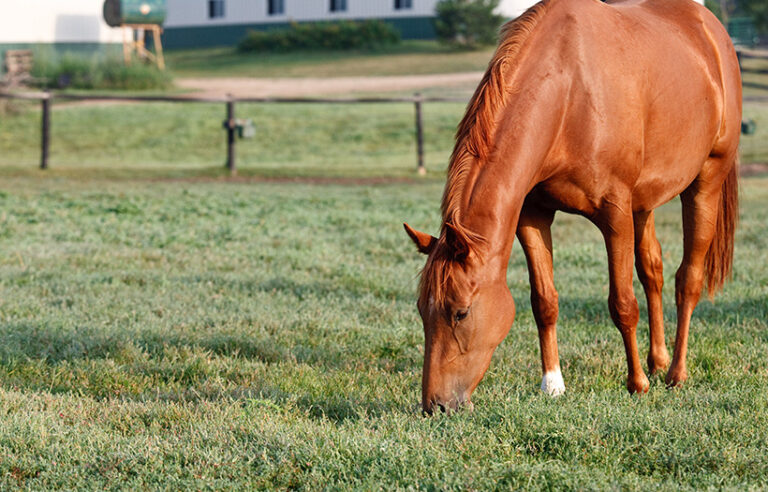
Does My Horse Need a Diet or Exercise Change?
Read the importance of assessing a horse’s body condition, weight, and topline when considering adjustments to their diet or exercise regimen.
View Blog -
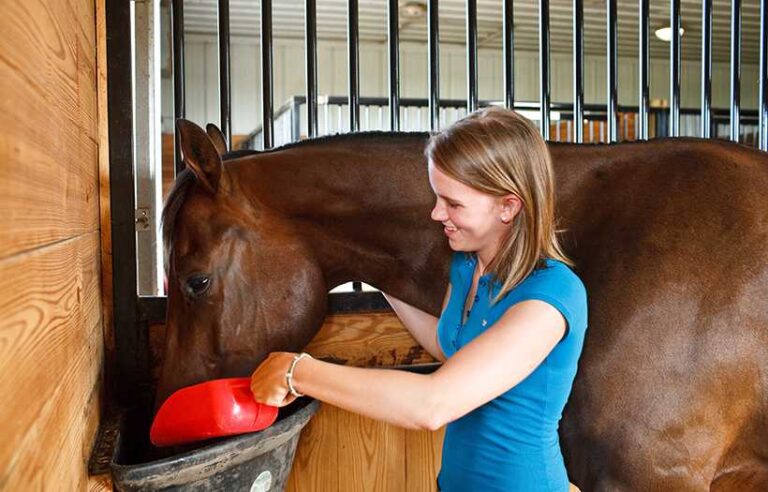
Ration Balancers vs Regular Horse Feeds
Which is right for your horse? Learn the difference between regular horse feed and ration balancers and which is best for your horse and wallet.
View Blog


